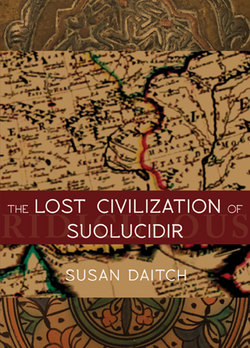Читать книгу The Lost Civilization of Suolucidir - Susan Daitch - Страница 13
На сайте Литреса книга снята с продажи.
ОглавлениеIn Persia, as in Egypt, the distribution of water was precisely regulated; hourglasses were used to measure the length of time the farmers utilized the water and a system of sluices made it possible to gauge the volume of the water. Leo Africanus speaks of the measuring clocks that operated by water: “When they are empty the watering period is over.” Mention is also made of skilled personnel and even teams of divers.
A History of Technology and Invention, Islam and Byzantium
Gaston Wiet, 1962
THE ZAFAR INSTITUTE WIRED MORE money. Working feverishly with the help of a local crew, the excavation began. For months I’d walked this territory, shovel clanging, while only a few inches under my footsteps rested the capitals, two bulls set back to back, of slender Persian columns, thinner and more fluted than Greek, of the great city of Suolucidir. I was sure this was it. The supports of this vast honey-combed metropolis were buried all over the landscape, their bell-shaped bases hidden intact deep within the earth. The palace at its center with its colonnaded porticos was set on a high terrace approached by a double flight of stairs. The rest of the city spiraled out from this locus. During the excavation we learned my hypothesis was right: the Suolucidiris defended their city by constructing a series of labyrinths, switchbacks, and elbow turns more circuitous than even those imagined to exist in the Burnt City to the north. I tried to get my crew to map out as much of it as possible and as quickly as possible. I attempted to find the thread of the path that led me to the underground zoo and the body of Ramin Kosari, but in the time left to me, the route was never successfully retraced, and no twentieth-century remains were discovered.
The English traveler Laurence Oliphant measured what he claimed were the ruins of an ancient synagogue at Deir Aziz in Go-lan in 1885. Oliphant was said to have been an unstable mystic, and his claim was all but forgotten. Nearly one hundred years later a contemporary archaeologist found the site again, and his measurements were identical within a few inches. Mad Oliphant was right all along. Some people anticipate what they’ll find, and so are blind to certain kinds of discoveries that contradict their expectations, but I believed the Nieumachers, and I was only following the measurements they’d laid out when no one had believed them either.
The city proved to be enormous. Around every turn lay some other spectacle; the friezes and statuary I saw before me the day I fell through the earth were only the beginning. Unfortunately, it was also the end.
